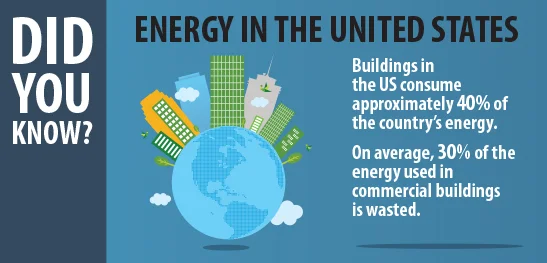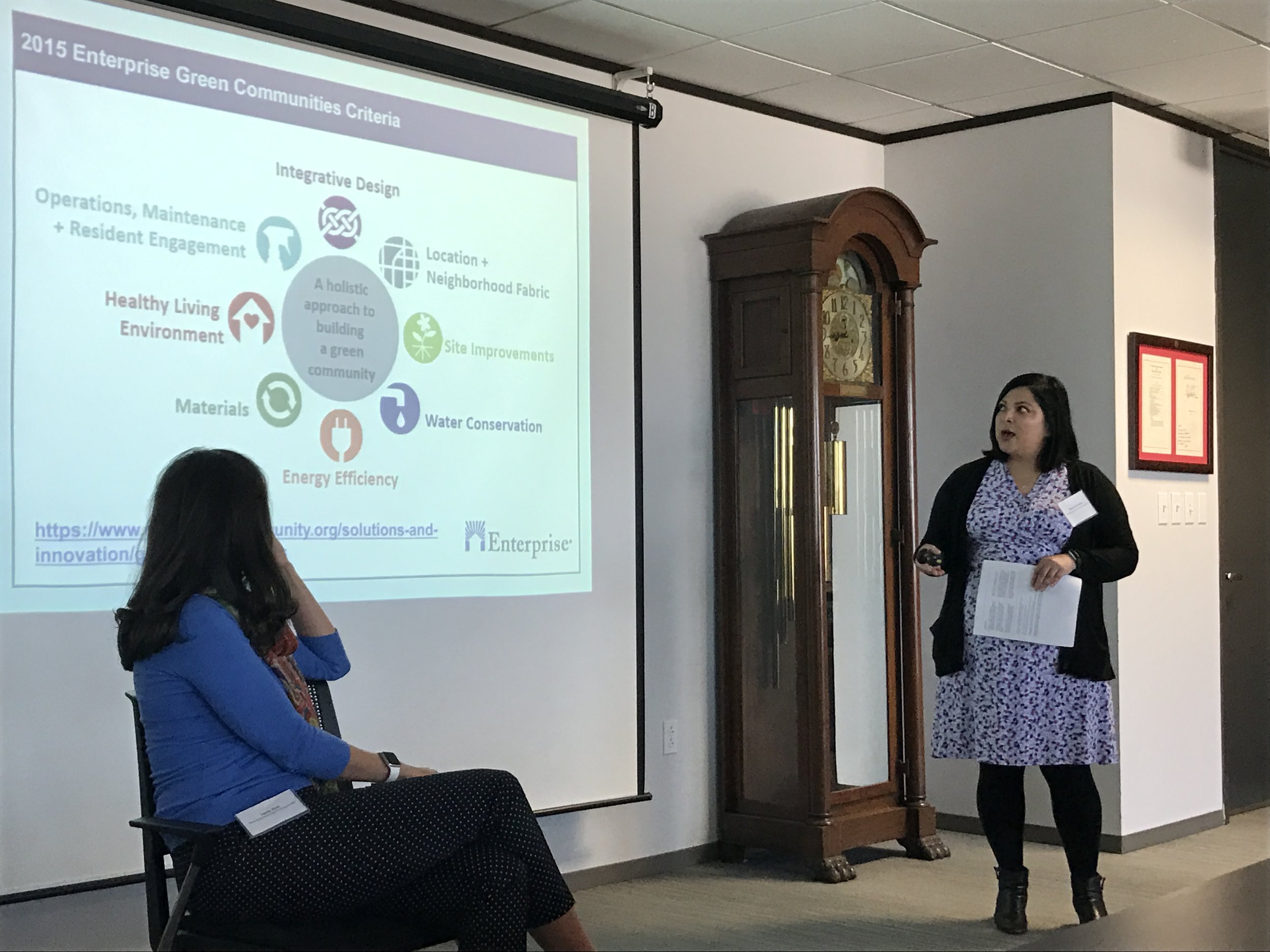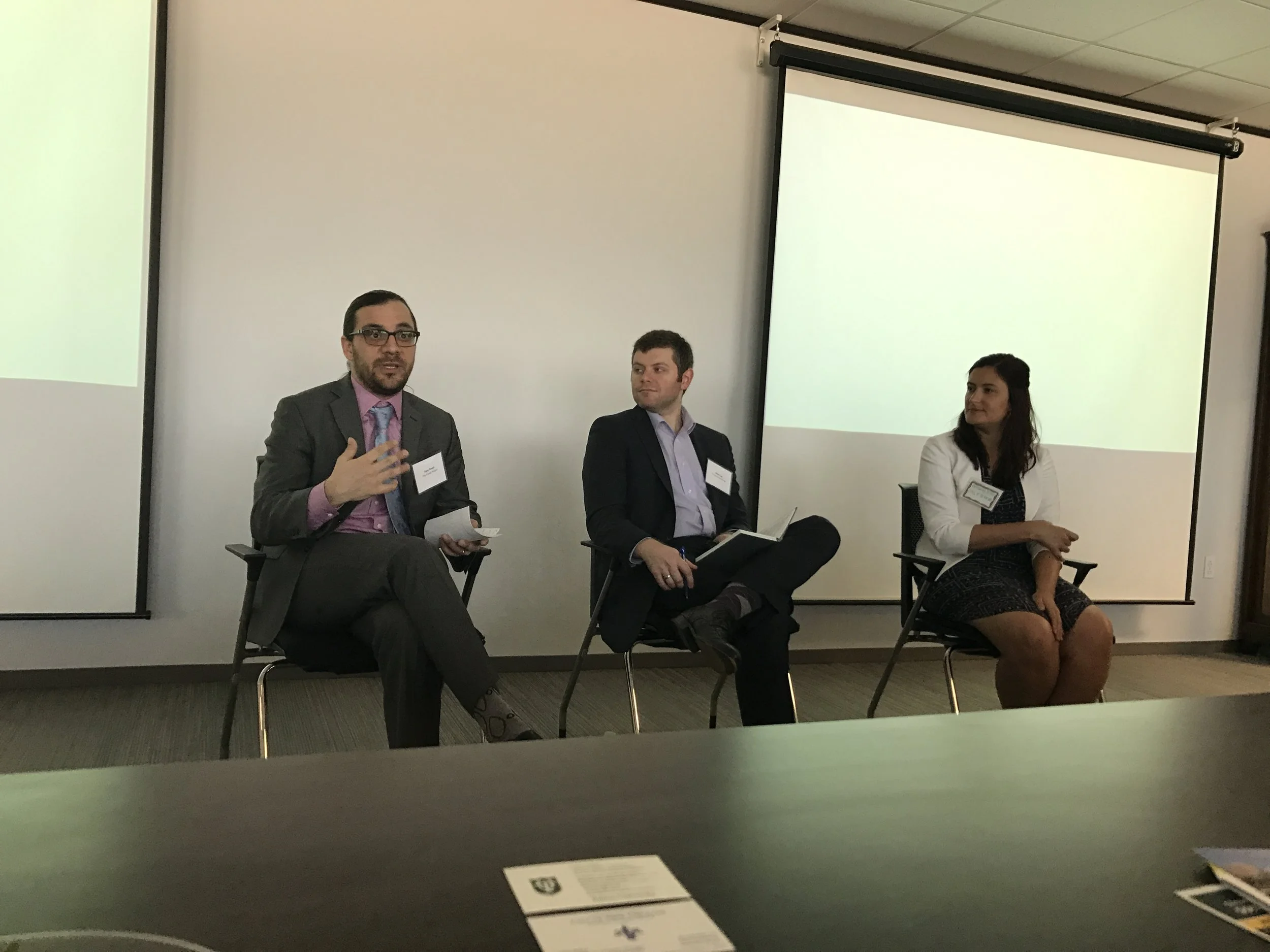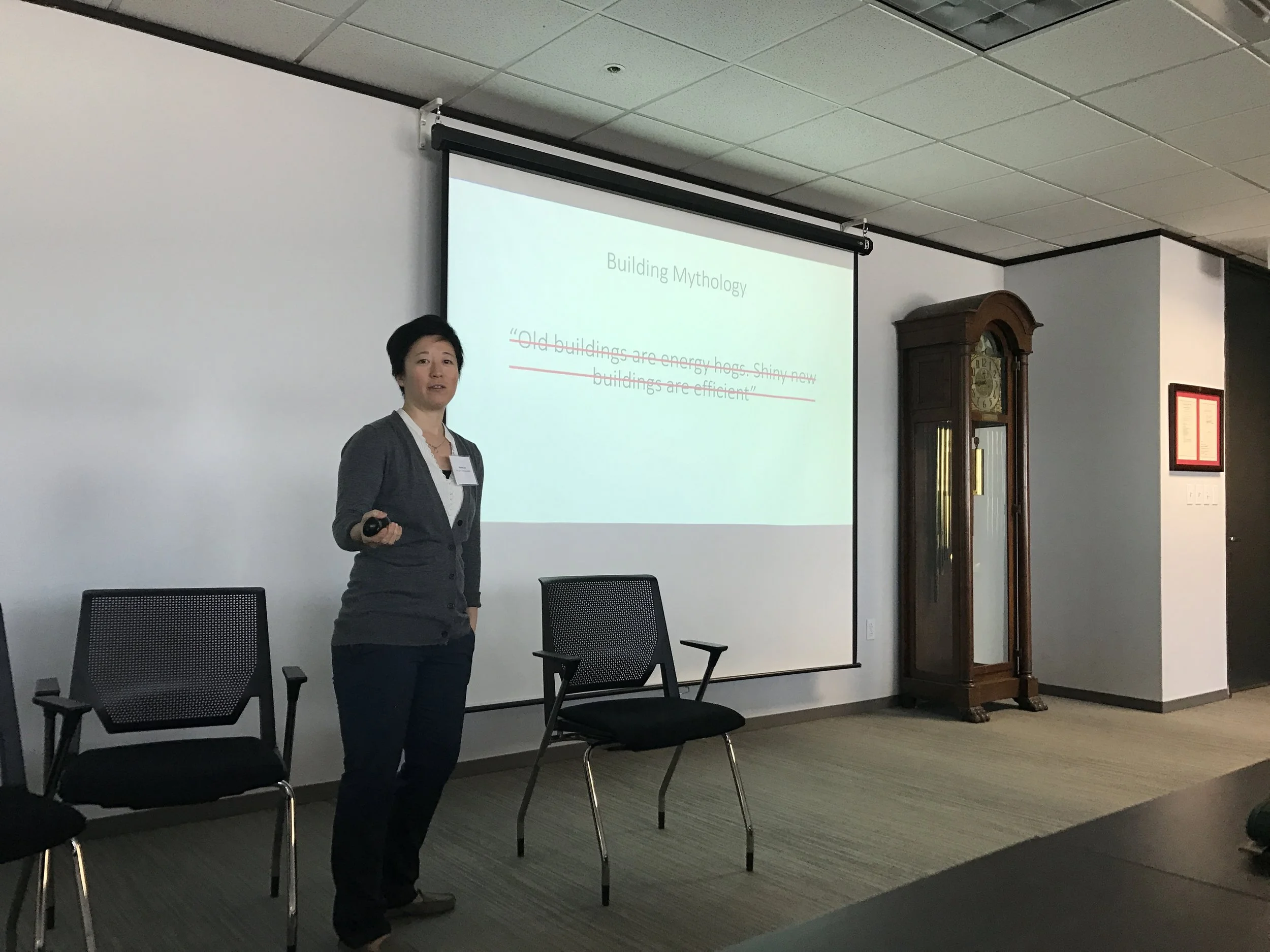New Orleans Commercial Building Energy Benchmarking Symposium
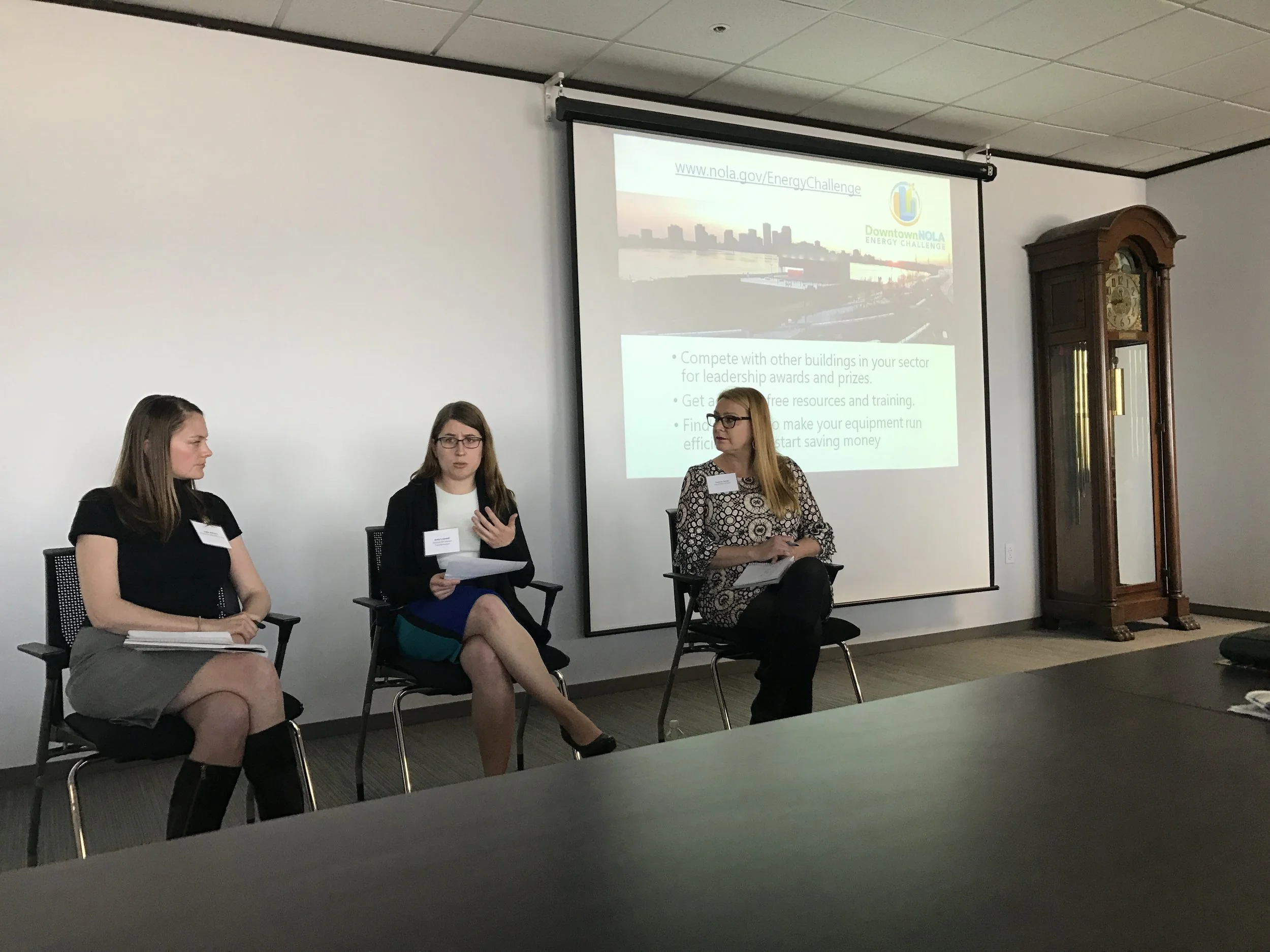
Last week, fellow EDR-er Mike Johnson and I attended the Commercial Building Energy Benchmarking Symposium, hosted by GNO Inc. at Energy Centre, New Orleans. The 1-day symposium was organized by individuals from the Tulane University MSRED program, the City of New Orleans, and TLC engineering. It was a truly great event where local professionals joined with benchmarking advocates from across the country who have used energy benchmarking strategies to reduce building energy use in their own cities.
Image Source: City of New Orleans
What is Energy Benchmarking?
The US Department of Energy describes benchmarking as “the practice of comparing the measured performance of a device, process, facility, or organization to itself, its peers, or established norms, with the goal of informing and motivating performance improvement." In simplest terms, it’s the measuring and reporting of a building's energy performance over time. Some more information about energy benchmarking can be found at the Institute for Market Transformation Website.
Why is it important?
Buildings account for 40% of energy consumption in the United States. Benchmarking allows both owners and occupants to understand their building’s energy performance relative to similar buildings – with this information they can identify opportunities and make cost-effective improvements to cut energy waste using the systems they’ve already purchased.
"Benchmarking demonstrates the impact that energy has on us" (Ryan Freed)
The symposium was divided into four different panels to demonstrate where it's worked, how to do it, where to begin and how to actually implement energy benchmarking here in New Orleans. Each panel will be discussed in more detail here:
Monica Gonzalez from Enterprise Community Partners
Project Experience and Case Studies
Cory Duggin, TLC Engineering for Architecture
Lorey Flick, Flick Engineering Professionals
Monica Gonzalez, Enterprise Community Partners
In the first panel of the day, Lorey Flick started off by discussing some of the strategies implemented in New York. Thanks to a number of effective local laws, NYC saw a 3-6% reduction in energy over the first three years. The adoption of these policies, however, was largely influenced by the high NY energy prices with electricity averaging around $.20/kWh (compared with $.082/kWh in New Orleans).
While the deceivingly technical nature of the benchmarking process may seem like a barrier to building managers and operators, she assures us that it’s really an administrative task – anyone can do it. Buildings get out of whack when they’re not being watched – this is a people problem, not a design problem – with a little bit of training and education, “it’s a no investment return on investment” (Flick)
How can you save $100,000 a year with no capital improvements? – benchmarking!
Up next, Monica Gonzalez (above) spoke about some of the hardships her group has experienced in the affordable housing market. Getting energy data has been quite challenging in that Entergy does not allow third party review of tenant data. Instead, they’ve had to engage the neighborhoods directly by throwing block parties and hosting energy competitions.
Cory Duggin spoke about some of his benchmarking successes with an emphasis on retrocommisioning – getting the building back to the way it was designed as sometimes things “float out of spec.” Together, the group discussed the importance of putting pressure on utility companies – either through policy interventions or encouraging internal initiatives. Currently, Building commissioning is required of all commercial buildings in the IECC 2012 code (New Orleans is still on the 2007 version). Instead, Louisiana requires that only buildings over 50,000 SF conduct commissioning.
Unfortunately, this is only reported through COMCheck and the data is not shared. In fact, the panel remarked that “no one ever checks” the commissioning component. With building commissioning as the potential single-most energy saving measure, there’s a need to train code officials as well. Benchmarking in New Orleans thus far has proven challenging, to say the least.
(L-R) Ryan Freed, Matt Cox and Brittany Sellers on the Benchmarking Standards Panel
Benchmarking Standards
Matt Cox, The GreenLink Group
Ryan Freed, City Energy Project
Brittany Sellers, City of Orlando
The next session included panelists from Atlanta, Washington D.C., and Orlando to share some of their successes and failures. New Orleans is a unique city, so the panel agreed that we can’t replicate anyone else’s strategies – we can only learn from them. And while most of us don’t think about energy efficiency all day every day, it’s important to know that it has a role in fulfilling your ultimate goals.
First up came Matt Cox from Atlanta (who clearly has a unique ability to manage and represent large data sets). Atlanta introduced the Better Buildings Challenge in 2011 where owners and managers pledged to reduce energy and water use by 20% by 2020.
This is the largest voluntary program in the country… however only 15% of the city’s commercial building footprint is currently included. The ordinance relies on benchmarking, transparency, audits every 10 years and retrocommisioning. Additionally, all government buildings in Atlanta are required to meet LEED silver. With the City as the largest landowner, they chose to lead by example and improve their own efficiency first.
Fun fact: energy efficiency creates jobs. In Atlanta, 3 jobs are created per $1M spent on electricity/power while 7 jobs are created per $1M spent on energy efficiency. 7 > 3.
Orlando, as presented by Brittany Sellers, has many similarities with Atlanta, most notably that it also runs a voluntary benchmarking program. In both cities, these initiatives came directly from the mayor’s office – they quickly learned that a lot of the changes really started with measurement. In Atlanta, they’re also training students to become certified energy benchmarkers, similar to Tulane’s MSRED program.
After a brief lunch presentation and food from Zoe’s Kitchen, the third panel began:
Starting from Scratch (Where to Begin)
Jackie Dadakis, Green Coast Enterprises
Wendy Lee, Salt Lake City Corporation
Brady Mills, CBRE
Unfortunately, I missed most of Brady’s presentation (Sorry, Brady) but he spoke a bit on the processes of benchmarking stemming from his experience with numerous projects here in New Orleans.
Wendy Lee from Salt Lake City was one of my favorite speakers of the day. She spoke about SLC’s benchmarking ordinance but also about the importance of transparency in the benchmarking process. SLC uses the free ENERGY STAR Portfolio Manager, which gives buildings an energy score from 1-100 (anything over 75 is considered high performing). Lower performers in SLC are required to provide energy “tune ups” every five years to optimize their system’s performance. SLC was the 25th city in the US to adopt a benchmarking requirement (see more at this USGBC article or the SLC 2016 Municipal Benchmarking & Greenhouse Gas Emissions Report)
Wendy Lee, Salt Lake City Corporation. Wendy sought to dispel the notion that "Old buildings are energy hogs, shiny new buildings are efficient" - it's not true! In fact, the Salt Lake City and County Building that she works in is over 120 years old yet is one of the highest performers in the city.
“More important than your building age is how you maintain and operate your equipment” (Wendy Lee)
Next came Jackie Dadakis, who teaches the Building Performance and Benchmarking course at Tulane. She went through the tool that she uses both in practice and with her students – Wegowise.com. She also made sure to note that benchmarking is not new to New Orleans… we just haven’t come together to share our data. She showed a number of examples that she’s completed with her students and it seems like a very powerful tool… albeit not free. We’re getting to a place where we potentially have all this data, which comes to the overarching question of the day – “once you have the data, how do you act on it?”
And for the final panel of the day came two locals and a legal utility expert (Kelly). In fact, in a moment of excitement, Kelly exclaimed “It’s not often that I’m in a room where people want to geek out on utility regulatory issues!”
(L-R) Logan Atkinson, Kelly Crandall and Camille Pollan
Local Implementation
Logan Atkinson, Alliance for Affordable Energy
Kelly Crandall, Institute for Market Transformation
Camille Pollan, City of New Orleans
It was the end of the day, so I have to admit that my notes weren’t very good at this point – but the conversation really centered around utility responsibility and advocacy. New Orleans has a unique utility structure in that we have both public and private regulatory utilities – similar only to Washington DC. Regardless of the utility structure, these agencies have a strong role on making energy efficiency a smooth experience for customers.
“When you know better you do better… but now what do we do??” (Logan Burke)
Throughout the day, I kept wondering why utility companies aren’t the ones taking the lead in benchmarking transparency – they already have all the data! The data exists, it’s just a matter of how it’s distributed. Most buildings even have meters that are visible from the street! Data privacy is such a huge concern in the utility world… but does your energy consumption need to be as secret as your social security number? Utility companies have a responsibility to protect their customers.
And then there are the people who don’t believe in climate change or particularly care about energy efficiency. This has to be a conversation about affordability. There’s also the aspect of stability and resiliency – energy efficiency helps moderate the extreme highs of your utility bills. Some jurisdictions offer energy assistance (help in paying utility bills) while others help with the actual performance of energy efficiency of a building – Logan called this, “teaching a house to fish”
The reoccurring themes throughout the day were really education and transparency. We don’t need a technical solution, the biggest barrier to energy benchmarking is us (people). Cory said something interesting at one point, saying, “if you design something to automatically turn off, folks just find a way to plug it in somewhere else, so it’s better to work on behavior.” It doesn’t even need to be a conversation about energy, it can just be about saving money by better utilizing the investments you’ve already made – enhancing public buildings, for example, saves tax-payer dollars! The second key is transparency - without a widespread pool of information to compare your own building to, it's difficult to understand how well or poorly it's actually performing.
OK, now what? What can I do?
Join the Downtown NOLA energy Challenge! The challenge is a features action in the City’s resilience strategy “Resilient New Orleans” and the City’s subsequent climate action strategy, “Climate Action for a Resilient New Orleans”. NOLA’s target is to reduce greenhouse gas emissions 50% by 2030 – this is incredibly ambitious and energy benchmarking is a major part of the strategy. The city of New Orleans offers free training if you're looking to get benchmark smart! Their next one is April 4th, with a full schedule of sessions at their website here.
"The Downtown NOLA Energy Challenge provides building owners, operators and managers with the tools to measure and track their energy use, and the expertise to develop an energy reduction plan."
EDR was one of the earliest signatories to the AIA 2030 Challenge. Critical to meeting this challenge is knowing how to measure energy performance. Z Smith, our Director of Sustainable Design, serves as a “Commitment Coach,” advising clients and peer architects on the technical ways of how to track energy performance. In our office, we strive to measure predicted and actual energy use for each of our projects where possible. Within our design process, we have a number of tools, including BIM, Sefaira, DIVA, etc, that we have integrated into our design process, including our own custom-designed software to measure window-to-wall ratios, Glass Rose. Additionally, 76% of our technical staff are LEED Accredited Professionals.
The rooftop at Energy Centre New Orleans (1100 Poydras)
Oh yeah, and a few of us finished the day taking a tour of the Energy Centre rooftop and mechanical room - enjoy some photos! (It was the cleanest mechanical room I have ever seen!) We walked through with the manager and the operator and both were fully committed to enhancing the efficiency of the building - and making this information public, too!
Mechanical Room - tour led by property manager Ryan Comeaux from Hertz Investment Group
